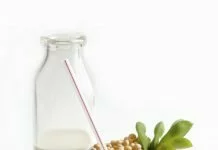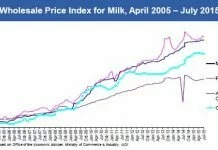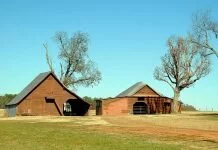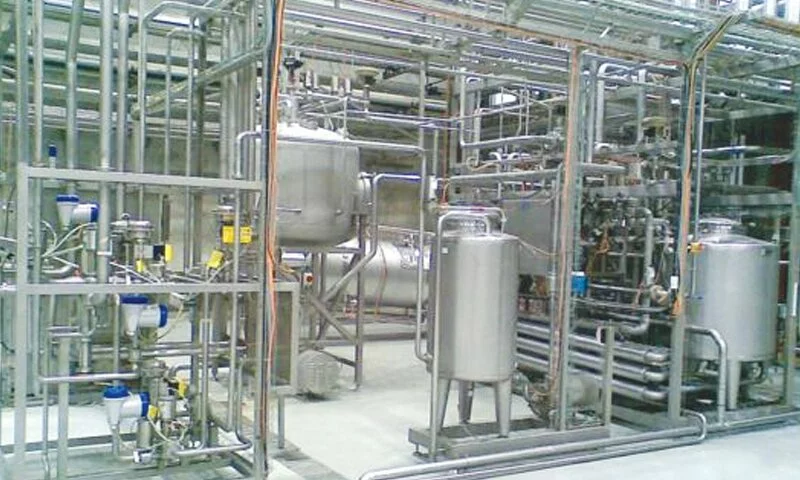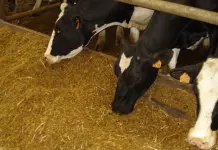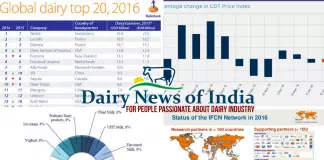‘Milk Village’ for Gujjars
Dr. Javaid Rahi
Recently, while attending a Tribal Convention, held at Jammu, the Chief Minister Mehbooba Mufti announced that J&K Government is going to establish a cluster of ‘Milk Villages’ in Jammu, on the prototype of ‘Apple Village’ and ‘Mango Village’ to be established in Kashmir and Jammu provinces respectively. She said that this Government will provide an opportunity to Gujjars- the main milk producers group – to grow up economically and contribute to the state. On the face of it , the concept is highly appreciable , rather it sounds like an innovative one. But , this is not for the first time that such initiatives have been announced. In last five decades the Government has initiated a number of steps to promote the concept of milk-selling aiming to boost the tribal and nomadic communities economy by extending maximum facilities to the members of Gujjar community to run this affair. But nothing concrete has emerged on the ground , till date.
The announcement of Chief Minister is a step forward in this direction which have a potential break the ice and to advance the age old culture or nomadic lifestyle and profession of Gujjars. This move, if taken, will not only develop the standard of life of the community but it will boost the economy and social status of tribes as well.
Since, the Government of India and State Government has enhanced the allocation for Tribal Budget significantly these innovative schemes will promote the livelihood of tribes considerably.
The Government Plan
As per the plan, the Government would identify a bunch of villages inhabited by the members of Gujjar community and these would be supplemented with all basic facilities like good schools including smart classes, healthcare facilities, clean drinking water, playfields, shops etc. besides adequate rearing and medical facilities for their livestock. All these developments would be made without disturbing their ancient way of life for which the community is known worldwide. These works would be done by utilizing the locally available manpower rather than getting it from outside these areas.
Another initiative
With the help of National Bank for Agriculture & Rural Development (NABARD) many states are running Government sponsored dairy development projects. Such programs have been launched to convert micro dairy farming projects into planned dairy trade ventures. The scheme is known as ‘Doodh Ganga Yojana’ which is the main project.
In J&K, Under Doodh Yojana Scheme, five Dairy Villages are being set up shortly. This will be an additional initiative of Government in this direction. Under this scheme, as stated by Animal and Sheep Husbandry Minister Ab. Ghani Kohli to media a few days back, that three village will be benefited in Jammu , one each from Kathua, Samba and Rajouri districts and two villages will be taken up from Kashmir province. Each village project will cost around Rs 1 crore.
As per reports , the Animal Husbandry Department will establish this project on ‘Gujarat Model’ and Detailed Project Report (DPR) has already been prepared. Under this scheme 50 persons in each village will be benefited under the programme. The self-help groups would be formed and the department will provide necessary training and technical knowledge to them. Under the scheme, the Government would also provide financial assistance and subsidy to the locals interested to establish dairy units.
The main objective of the proposal was to start a ‘white revolution’ by the flourishing execution of the proposal. Further it will help generate optional income for local inhabitants concerned with the project.
The Gujarat Model for Milk
It has been largely reported that India will be `10-lakh crore market in liquid milk, dahi and khoa by 2020 and Gujarat is going to play a lead role in it.
In India for Milk products ‘Amul’ and ‘Gujarat’ are synonymous. Amul though have covered many areas but it has been known as Gujarat based organisation which converted the dairy business into an industry through technological breakthrough that truly revolutionised India in this sector. Making of milk powder, cheese or baby food, from buffalo milk is considered main revolution of this organisation.
Besides Amul there are around a dozen big companies pro active in this market in India . They include the Chennai-based Hatsun Agro Product Ltd alone procures an average 26 lakh litres per day (LLPD) or close to 1 mt annually. Besides, there are at least nine companies with an average milk procurement of 10-15 LLPD each (Parag Milk Foods, Schreiber Dynamix Dairies, Heritage Foods, Tirumala Milk Products, Kwality Ltd, Sterling Agro Industries, VRS Foods, Bhole Baba Milk Food Industries and Nestle India) and many others that do 5-10 LLPD (Prabhat Dairy, Indapur Dairy, Dodla Dairy, Creamline Dairy Products, SMC Foods, Milkfood, Gopaljee Dairy Foods, and Anik Industries.
Owing to article 370 and other restrictions , all such companies do not showing their interests in J&K which posses a high potential of milk production.
Milk procurement in J&K
In 2004 , after J&K State Cabinet decision, a MOU was inked between J&K Govt. and Gujarat Co-operative Milk Marketing Federation Ltd.(AMUL). The aim was to revive two liquidated Milk Federations of J&K state on AMUL pattern which were established in 1983 and running on losses . Subsequently a new organization in the name and style of “Jammu & Kashmir Milk producers ’Co-operative Ltd.’(JKMPCL) came into existence for Dairy Development activities in J&K state with proactive support of AMUL. Presently as said the, JKMPCL is financially viable and both the Milk Plants at Cheshmashai in Srinagar and Satwari in Jammu are running on profits. Apart from milk procurement, JKMPCL has earned the faith of milk producer and also of State Govt.
Bold initiative by Government
As the J&K enjoys special status under Indian Constitution and have a power to go even ahead of other India states, with some bold initiatives which can develop this sector into many folds. The analysis predicts that by 2030, India’s population will be around 1.53 billion people and more than 19% of world’s population. They said that consequently the income will rise in many folds. As incomes rise, people generally prefer to spend a higher share of their food budget on animal protein, so meat and dairy consumption tends to grow faster than that of food crops.
* Allow National companies to establish their plants in J&K with the help of J&K residence.
* The process to register the Co-operative Society in milk productions be made easier.
* Nominate at least 4 Gujjars to J&K “Jammu & Kashmir Milk producers ’Co-operative Ltd.’(JKMPCL) as presently no one from this community is the member of the board.
* Local industry be encouraged to install milk plants with special initiatives.
* Milk collection booths be etablished in each areas mainly nearest to cities.
* Provide subsidy for installation of new milk plants/ Milk Markets.
* The capacity building programme be initiated with the help of tribal communities.
* New animal breeds be introduced to enhance milk productions.
* Sheep, goats and camels milk products be popularised.
* Baby foods be made more attractive.
Comments
comments










